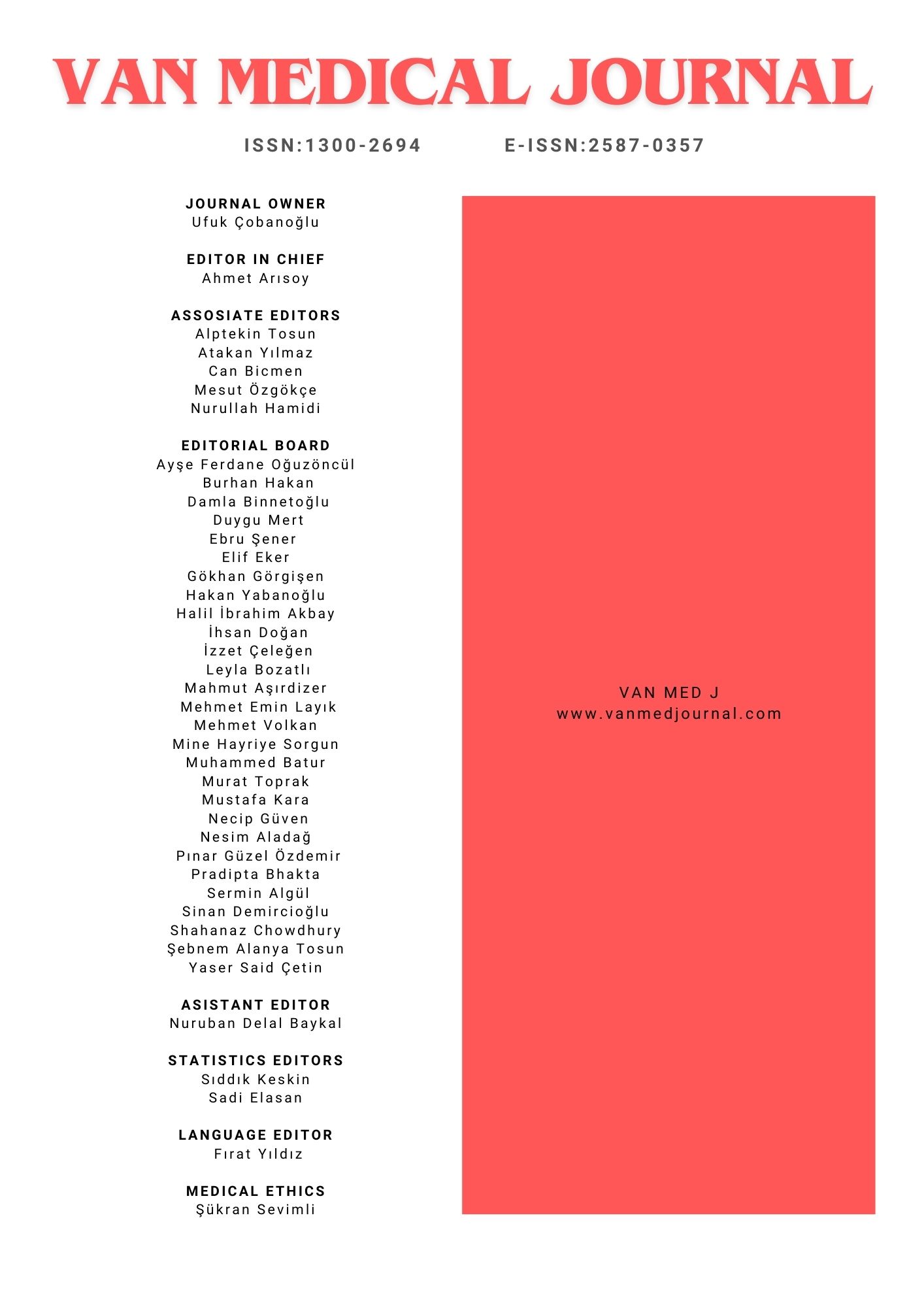Effect of Socio-Economic Status and Immigration on the Distribution of Intestinal Parasites in 0-14 Years Old Children
Hasan Yılmaz1, Nevzat Akman2, Ahmet Gödekmerdan3, Yaşar Göz41Yüzüncü Yıl Üniv. Tıp Fakültesi Mikrobiyoloji ve Klinik Mikrobiyoloji ABD, Van2Yüzüncü Yıl Üniv. Tıp Fak. Halk Sağlığı ABD, Van
3Fırat Üniv. Tıp Fakültesi Parazitoloji ABD, Elazığ
4Yüzüncü Yıl Üniv. Sağlık Bilimleri Enstitüsü, Van
In the present study, the effect of socio-economic status on the distribution of intestinal parasites was investigated. In this study, immigrants who have low socio-economic status were named as Immigrant group, and those resident persons who have high socio-economic status were named as Resident group. Stool samples were examined by native-lugol, staining with iron-haematoxylin and flotation (in saline solution) methods in the study. One or more intestinal parasite species in 89 (62.68%) out of 142 children from the Immigrant group and in 22 (25%) out of 88 children from the Resident group were determined. Among the Immigrant group, the parasite's positivity rates were found follows: Entamoeba histolytica 14.04%, Entamoeba coli 14.79%, Blastocystis hominis 4.93%, Endolimax nana 0.70%, Giardia intestinalis 23.24%, Chilomastix mesnili 2.11%, Ascaris lumbricoides 29.58%, Trichuris trichiura 9.15%, Enterobius vermicularis 0.70% and Hymenolepis nana 2.11%. Parasite's positivity rates among the Resident group were found as follows: E.histolytica 7.95%, E.coli 5.65%, G.intestinalis 11.36%, B.hominis 7.95% and A.lumbricoides 3.41%. In the present study, the results showed that parasite's positivity rate was aproximately 2.5 times higher in the Immigrant group when compared to the Resident group (p<0.001).
Keywords: Intestinal parasites, socio-economic status.Sosyo-Ekonomik Düzeyin ve Göçün 0-14 Yaş Grubu Çocuklarda Barsak Parazitlerinin Dağılımına Etkisi*
Hasan Yılmaz1, Nevzat Akman2, Ahmet Gödekmerdan3, Yaşar Göz41Yüzüncü Yıl Üniversitesi Tıp Fakültesi Mikrobiyoloji ABD, Van2Yüzüncü Yıl Üniv. Tıp Fak. Halk Sağlığı ABD, Van
3Fırat Üniv. Tıp Fakültesi Parazitoloji ABD, Elazığ
4Yüzüncü Yıl Üniv. Sağlık Bilimleri Enstitüsü, Van
Bu araştırmada, sosyo-ekonomik düzeyin ve göçün 0-14 yaş grubu çocuklarda barsak parazitozlarının dağılımına etkisi incelendi. Çalışmada, sosyo-ekonomik düzeyleri düşük olan göçmenler göçmen grubu, sosyo-ekonomik düzeyleri yüksek olan lojman sakinleri ise lojman grubu olarak isimlendirildi. Araştırmada, dışkı örnekleri nativ-lugol, demir-hematoksilen boyama ve flotasyon (doymuş tuzlu suyla) yöntemleriyle incelendi. Araştırmada göçmen grubundan 142 çocuğun 89 (%62.68)’unda, lojman grubundan 88 çocuğun 22 (%25.00)’sinde bir veya daha fazla parazit türü saptandı. Göçmen grubunda; Entamoeba histolytica %14.04, Entamoeba coli %14.79, Blastocystis hominis %4.93, Endolimax nana %0.70, Giardia intestinalis %23.24, Chilomastix mesnili %2.11, Ascaris lumbricoides %29.58, Trichuris trichiura %9.15, Enterobius vermicularis %0.70 ve Hymenolepis nana %2.11 oranlarında saptandı. Lojman grubunda; E.histolytica %7.95, E.coli %5.65, G.intestinalis %11.36, B.hominis %7.95 ve A.lumbricoides %3.41 oranlarında saptandı. Bu araştırmada, göçmen grubundaki parazit görülme sıklığı, lojman grubunda görülenin 2.5 katından daha yüksek bir oranda bulundu (p<0.001).
Anahtar Kelimeler: Barsak parazitleri, sosyo-ekonomik düzey.Manuscript Language: Turkish

